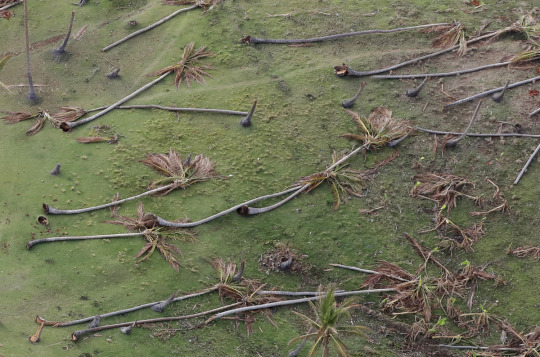Haiti After Hurricane Matthew:
Part One
In this episode of The Turnaround, we take you to Haiti where Hurricane
Matthew has destroyed entire communities and created the potential for
cholera outbreaks in its wake.

The impoverished nation was still recovering from a massive earthquake when Hurricane Matthew hit.
10/18/2016
For the second time in under a decade, Haiti is reeling from a
catastrophic natural disaster that has caused mass fatalities and
ravaged much of its already-vulnerable infrastructure.
A devastating magnitude 7 earthquake rattled the impoverished island
nation in 2010, triggering dozens of aftershocks and killing as many as 316,000 people. Some 300,000 more were injured and approximately 1.5 million residents were internally displaced.
Haiti’s recovery from the quake has been a slow and painstaking process, plagued by the worst Cholera outbreak in recent history. Tens of thousands of Haitians were still homeless or living in dilapidated shelters years later when disaster struck again.
Hurricane Matthew ripped through the country’s southwest with wind
speeds reaching 145 mph in early October. The storm left a deadly trail
of “complete destruction,” Haitian Interior Minister François Anick Joseph said days after it hit. Experts fear the latest disaster could worsen the ongoing cholera epidemic.
The hurricane caused severe damage to crops and destroyed boats used
for fishing in some of the worst-affected areas, leaving many people
unable to support themselves with “nothing left to survive on,” according to Marc Soniel Noel, the deputy mayor of Chantal in southern Haiti.
The United Nations announced that a “massive response” to the crisis is required with at least 1.4 million Haitians currently in need of help, but multiple humanitarian groups have said that badly damaged infrastructure and blocked roads have made it difficult to reach survivors.
Agencies like the World Food Programme and American Red Cross are
working to distribute food and medical supplies, as doctors remain
largely inaccessible.
“Many people I have met are surviving by eating fruit from fallen trees,”
said Carlos Veloso, a WFP representative in Haiti. “We are using trucks
and helicopters to transport [food supplies] as quickly as possible to
save lives.”
No comments:
Post a Comment